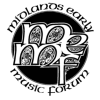
When I was a child, one of our Christmas Eve rituals was shouting to Santa Claus up the chimney, with a long list of requests on which we were encouraged to put a range of possible gifts from small and realistic to large and out-of-the-question. An excellent idea which I used with my own offspring until they finally rebelled! One of my out-of-the-questions was, for many years, a harpsichord.
Why, given the joys of television advertising and peer pressure, a harpsichord? Well in those days it was probably to do with liking the sound it made, and being intrigued by the mystery of the instrument hidden under a cover in the corner of my piano teacher’s room. Later on when I had access to a real live harpsichord to play, I discovered that it isn’t just an instrument with a pleasant sound and an interesting history and repertoire, it has the potential to be a full-time hobby all on its own.
Oh yes, the piano player can get away with a yearly tuning of her instrument under optimal conditions, but the harpsichord player needs to be prepared to tune all of those strings nearly as often as she wants to play the keyboard. Not only that, but depending on the state of repair and how often it is played, the delicate mechanism that plucks the strings needs regular attention and tweaking.
The upside of all this tuning is of course that the temperament can be changed (fairly easily if you own a suitable electronic tuner, trickier if working off a circle of fifths). This allows for plenty of experimentation, both in solo repertoire and if working with perhaps an interested violinist. Anyone used to listening purely to equal temperament will be surprised what a difference it can make to some pieces. You can decide for yourself what works well and what sounds vile.
Now it is quite possible to buy an electronic keyboard that provides a fair reproduction of harpsichord sound and may even allow for use of different temperaments and tuning down to lower pitch at the touch of a button.
So why would anyone still want to buy a harpsichord?
Well apart from enjoying the look of a harpsichord in your house – and they are usually very lovingly finished, whether plain wood or decoratively painted – the main reason is that an electronic instrument just does not give the same feedback through the hands and body that a “real” instrument does. The slight variations in the touch from key to key (minimised on a really good instrument of course) add a lot of character, and the plucking action feels subtly different from an electronic keyboard, making you play it in a slightly different way. The way the sound resonates through the instrument makes it hit you differently to the more directed sound from on-board speakers. The whole experience is more immersive. The sound is more interesting as design and build makes a huge difference. And you have the satisfaction of continuing a tradition going back hundreds of years.
So if you have the time to commit, do think about a real harpsichord or spinet (its smaller cousin). It will consume your free time if you let it, but oh, the music you will make…

